
- Subject:
- Sociology
- Material Type:
- Unit of Study
- Provider:
- Rice University
- Provider Set:
- OpenStax College


Define and describe the scientific method
Explain how the scientific method is used in sociological research
Understand the function and importance of an interpretive framework
Define what reliability and validity mean in a research study
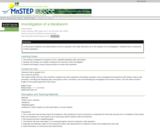
This activity is based on observations of mealworms form a question and make decisions as to the design of an investagation. Students use data collected to make a conclusion to their questions.
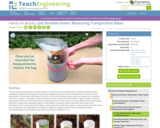
Through multi-trial experiments, students are able to see and measure something that is otherwise invisible to them seeing plants breathe. Student groups are given two small plants of native species and materials to enclose them after watering with colored water. After being enclosed for 5, 10 and 15 minutes, teams collect and measure the condensed water from the plants' "breathing," and then calculate the rates at which the plants breathe. A plant's breath is known as transpiration, which is the flow of water from the ground where it is taken up by roots (plant uptake) and then lost through the leaves. Students plot volume/time data for three different native plant species, determine and compare their transpiration rates to see which had the highest reaction rate and consider how a plant's unique characteristics (leaf surface area, transpiration rate) might figure into engineers' designs for neighborhood stormwater management plans.
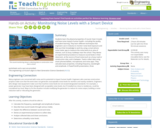
Students learn the physical properties of sound, how it travels and how noise impacts human health—including the quality of student learning. They learn different techniques that engineers use in industry to monitor noise level exposure and then put their knowledge to work by using a smart phone noise meter app to measure the noise level at an area of interest, such as busy roadways near the school. They devise an experimental procedure to measure sound levels in their classroom, at the source of loud noise (such as a busy road or construction site), and in between. Teams collect data using smart phones/tablets, microphones and noise apps. They calculate wave properties, including frequency, wavelength and amplitude. A PowerPoint® presentation, three worksheets and a quiz are provided.

Discover how motocross racers are able to jump and land safely. Watch two young motocross racers use the scientific method to figure out how their body positions affect their jumps. [6:55]

Come on Junior Engineers! Murray needs help making his car go farther. What changes can you make? This resource teaches STEM skills. [2:03]
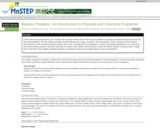
In this classroom guided inquiry lesson, students will complete a serious of tests using five different mystery powders. Student will develop hypotheses, make observations, and draw conclusions about what each powder is and the physical and chemical reactions that occur when heat, water, iodine, and vinegar are added to each substance.

Identify simple principles of physical science and engineering by exploring ramps and things that roll. Predict which items will slide or roll down a ramp and test your predictions.

Practice the scientific steps of making predictions, observations, and discoveries while making this simple meringue recipe.

Estimate how many pennies a flatboat made of aluminum foil will hold, then test your hypothesis.

This video segment, adapted from ZOOM, explores sounds made by homemade drums of different sizes, shapes, and materials. [3:41]

Psychology is designed to meet scope and sequence requirements for the single-semester introduction to psychology course. The book offers a comprehensive treatment of core concepts, grounded in both classic studies and current and emerging research. The text also includes coverage of the DSM-5 in examinations of psychological disorders. Psychology incorporates discussions that reflect the diversity within the discipline, as well as the diversity of cultures and communities across the globe.Senior Contributing AuthorsRose M. Spielman, Formerly of Quinnipiac UniversityContributing AuthorsKathryn Dumper, Bainbridge State CollegeWilliam Jenkins, Mercer UniversityArlene Lacombe, Saint Joseph's UniversityMarilyn Lovett, Livingstone CollegeMarion Perlmutter, University of Michigan



By the end of this section, you will be able to:
Explain how scientific research addresses questions about behavior
Discuss how scientific research guides public policy
Appreciate how scientific research can be important in making personal decisions

Play a game of concentration by matching terms used in the scientific method to their proper description.

In this fun song from The Cat in the Hat Knows A Lot About That!, children learn about planning and carrying out investigations. Nick and Sally learn to keep an open mind about accidents, and all the new discoveries they can lead to! [1:30]
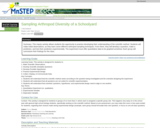
Short Description: This is an inquiry investigation, geared toward student use of outdoor schoolyard sites. Its focus is to have students applying what they've learned about the scientific method and experimental design, gathering quantitative evidence to support hypotheses.

The scientific method is more than just a series of steps to be followed like a recipe. It is a fluid, ever-changing process. This video discusses student's perception of the scientific method and how to make learning science in the classroom more authentic. [10:27]